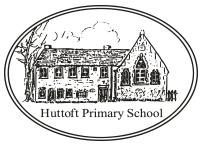Computing
Legal Framework
The computing sections of the Statutory Framework for the Early Years Foundation Stage (2017) and the national curriculum computing Programmes of Study (2014) form the roots of Huttoft Primary and Nursery School’s computing curriculum. From this national documentation, Huttoft’s computing curriculum has been devised, developed and personalised to our school community.
Our computing curriculum is underpinned by the national curriculum statement for computing:
A high-quality computing education equips pupils to use computational thinking and creativity to understand and change the world. Computing has deep links with mathematics, science, and design and technology, and provides insights into both natural and artificial systems. The core of computing is computer science, in which pupils are taught the principles of information and computation, how digital systems work, and how to put this knowledge to use through programming. Building on this knowledge and understanding, pupils are equipped to use information technology to create programs, systems and a range of content. Computing also ensures that pupils become digitally literate – able to use, and express themselves and develop their ideas through, information and communication technology – at a level suitable for the future workplace and as active participants in a digital world.
Intent
At Huttoft we understand that computing is at the heart of our children’s future. It will shape their future lives and careers and it is therefore crucial that our children are well equipped to using technology effectively and with confidence to enhance and support their learning, as well as explore and problem solve within technology. Good quality, varied and up to date computing teaching is crucial to ensure we provide our children with the start they need.
Children will able to become active participants in a world of rapidly-changing technology. The core of computing is computer science, in which pupils are taught the principles of information and computation, how digital systems work, and how to put this knowledge to use through programming.
All learning outcomes can be described through a high-level taxonomy of ten strands, ordered alphabetically as follows:
- Algorithms - Be able to comprehend, design, create, and evaluate algorithms
- Computer networks - Understand how networks can be used to retrieve and share information, and how they come with associated risks
- Computer systems - Understand what a computer is, and how its constituent parts function together as a whole
- Creating media - Select and create a range of media including text, images, sounds, and video
- Data and information - Understand how data is stored, organised, and used to represent real-world artefacts and scenarios
- Design and development - Understand the activities involved in planning, creating, and evaluating computing artefacts
- Effective use of tools - Use software tools to support computing work
- Impact of technology - Understand how individuals, systems, and society as a whole interact with computer systems
- Programming - Create software to allow computers to solve problems
- Safety and security - Understand risks when using technology, and how to protect individuals and systems
Our Computing curriculum is enhanced by the Teach Computing teaching and learning resources:
KS1 - Computing Curriculum Map
 Huttoft Primary & Nursery
School
Huttoft Primary & Nursery
School